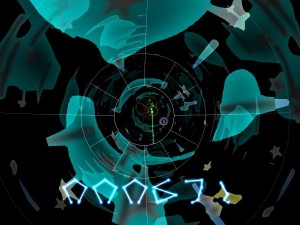Games Interactive 2: Terminology
The English language is unusual for having two unrelated words for “play” and “game”. Compare Spanish jugar/juego, German spielen/Spiel, Russian играть/игру. The seminal ludology text Les jeux et les hommes is usually rendered in English as “Man, Play, and Games”, using two words to express the full extent of what Caillois means by jeux. The very idea that playing and games are two separate concepts seems to only make sense to people whose native language supports that notion, and perhaps not even them, if they think about it. From the right perspective, games seem like a subset of play, comprising play that uses fixed rules.
Games Magazine goes against this by generalizing “game” to the point where it may even be a superset of play — crosswords and cryptograms and similar puzzles are leisure activities, sure, but I hesitate to categorize them as play. You don’t play a cryptogram, you solve it. (Solitaire Hangman is kind of a special case here.) But the two volumes of Games Interactive don’t hesitate to call them “games”, asking you to “Select Games” from the main menu and such. I call them “puzzles”, but the word “puzzle” is largely avoided in the games themselves, and when it is used, it’s to refer to an individual unit within a multi-part “game” like a Battleships set; crosswords, which are served up one at a time, are never called “puzzles”. The one big exception is the “Visual Puzzles” category in Games Interactive 2, which seems like a mistake. The first Games Interactive called the category just “Visual”.
It’s almost as if they’re using the word “game” not in its customary sense, but as a translation of “jeux“. I mean, Caillois did specifically give crosswords as an example in Les jeux et les hommes. But then, he also mentioned dancing, and that seems over-broad even for the magazine.
The strange part is that, while I’m reluctant to classify traditional print puzzles as games, I have no problem regarding Games Interactive and its sequel, which are composed of traditional print puzzles, as games. I suppose part of it is that they were packaged and sold as a games. But also, they’re not very different from other familiar puzzle games, and the interactivity is a big factor. The ability to place your battleship pieces arbitrarily and experimentally and delete them without consequence or erasure marks when they don’t pan out, or to try out different letter mappings in your cryptogram and let the computer instantly show you the consequences, or to click on parts of a picture in a visual puzzle and be instantly told whether each click was right: these things change how you engage with the puzzles, making it more, well, playful. There are puzzle types here — chiefly Logic and Visual one-offs — that don’t support playful interactivity, instead essentially just giving you a question and prompting you for an answer. Those are the least successful puzzles here, barring bugs. As for the rest, even if you don’t play the puzzles per se, at least you play with them. And that’s a distinction I’d be surprised to see in any language other than English.
 Comments(0)
Comments(0)